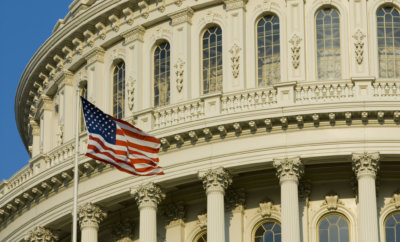Business
About Half the Foreign Student Population in U.S. Hails from India, China

Representational Image
Photo: Bigstock
The number of Indian students in the United States stood at 211,703, while that from China was recorded at 377,070.
As much as 49 percent of the F-1 and M-1 non-immigrant international student population in the United States hails from either India or China, according to a recent biannual report on student trends conducted by the Student and Exchange Visitor Program (SEVP).
The number of Indian students in the United States stood at 211,703, while the corresponding figure from China was 377,070, between March 2017 and 2018, the report said.
F-1 students are non-immigrants whose primary purpose is to complete an academic course of study at an SEVP-certified school or program, while M-1 non-immigrants are foreign nationals pursuing a full course of study at an SEVP-approved vocational or other recognized nonacademic institution — other than in language training programs — in the United States. SEVP oversees students and their dependents, as well as the schools that enroll them, for compliance with U.S. laws and regulations.
Both China and India saw proportional growth between 1 and 2 percent, with China sending 6,305 more students and India sending 2,356 more students, the report, titled Sevis by the numbers, stated, comparing data from March 2017 to March 2018.
“It is this level of participation from China and India that makes Asia far and away the most popular continent of origin. In fact, 77 percent of all international students in the United States call Asia home,” the report said.
The report, however, highlighted that despite steady growth from the two most popular nations — China and India — there was a slight decrease in the number of Asian students who were coming to study in the United States during this period.
Europe was the second most popular continent of origin, which also saw a slight decrease in the number of students coming to study in the United States.
“Roughly 85 percent of all F- 1 and M-1 students were enrolled in associate, bachelor’s, master’s or doctoral programs certified by SEVP. Specifically, there were 1,019,333 degree-seeking international students in the United States’ higher education system, which is a 0.8 percent increase from March 2017,” the report said.
The largest growth and decline came from students seeking doctorate degrees and associate degrees, respectively. Doctorate degree programs saw a four percent increase (+6,241), while associate degree programs saw a five percent decrease (-4,793). Students seeking bachelor’s and master’s degrees stayed stable.
There were 785,435 F-1 students in the United States seeking either a bachelor’s degree (402,293 students) or a master’s degree (383,142 students). As many as 43 percent of these students are female. These two levels of education were the most popular among international students coming to the United States.
A total of 169,359 bachelor’s and master’s students studied business, management, marketing and related support services. The numbers for engineering stream stood at 148,875 while that for computer and information sciences and support services was 135,608.
A recent study by the Council of Graduate Schools (CGS), a non-profit higher education organization based in Washington DC, showed that applications and enrollments by international graduate students, including Indian students, at American colleges and universities declined in 2016-17.



